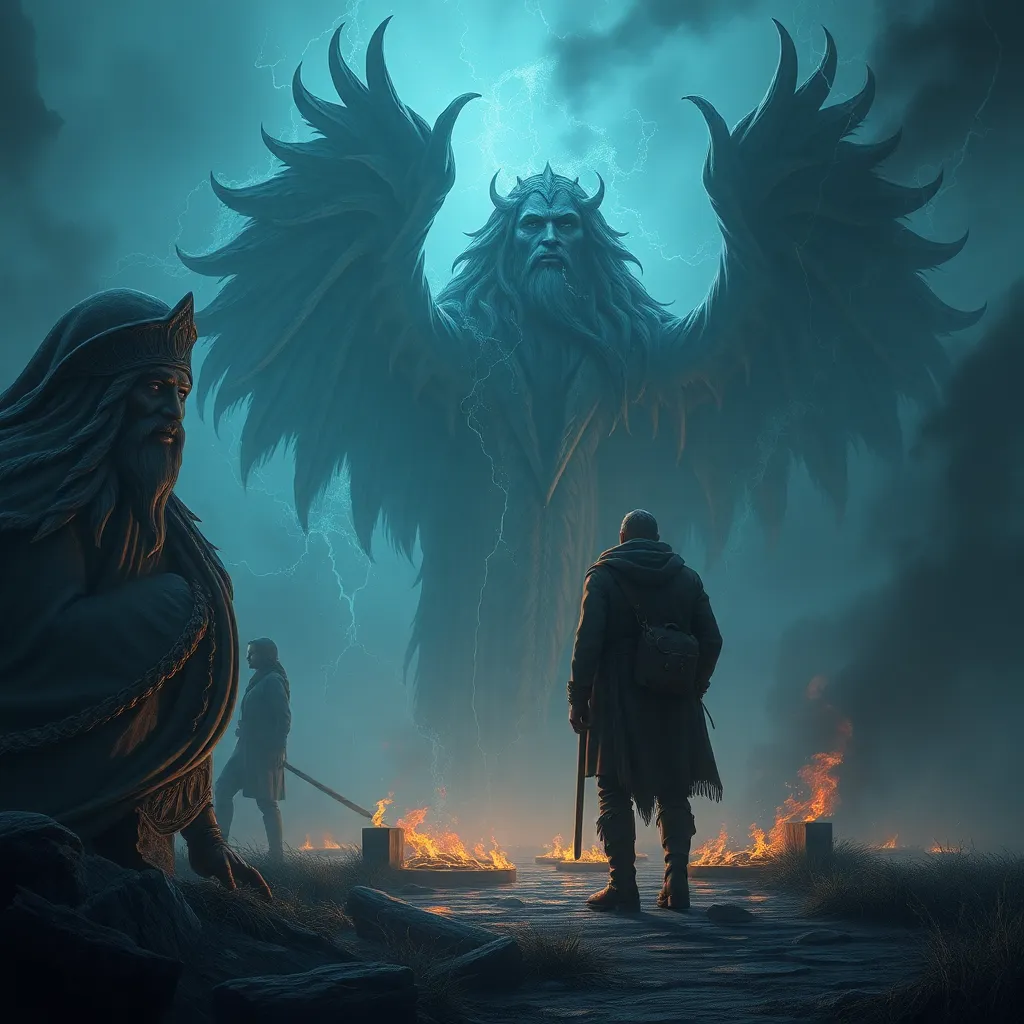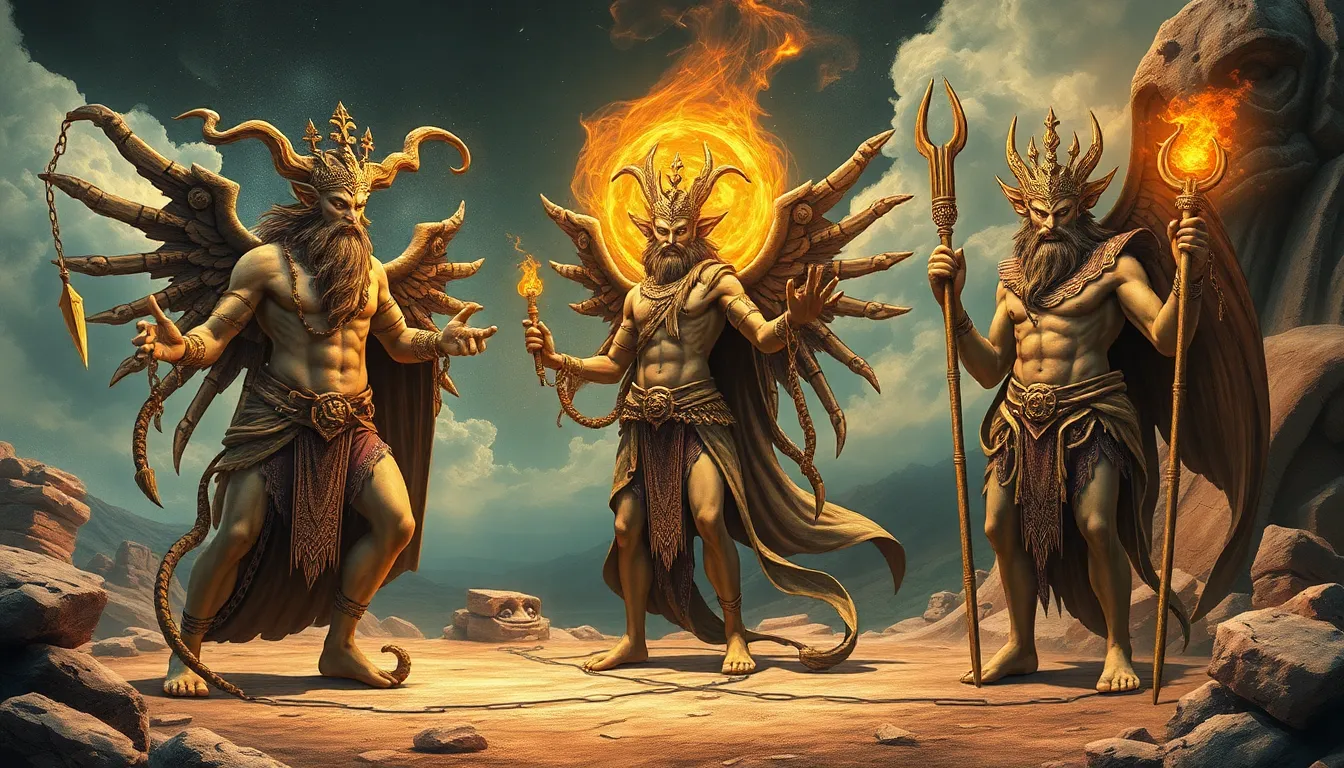The Allure of the Underworld: Why Myths Still Captivate Us
Introduction: The Timeless Fascination with Myths
Myths have been an integral part of human culture for millennia, serving as vessels for the collective imagination of societies around the world. From the ancient epics of Mesopotamia to the folktales of indigenous cultures, myths provide insight into the values, fears, and aspirations of the people who tell them. Among the most compelling themes found in these narratives is the concept of the underworld—a realm that serves as a backdrop for stories of mystery, danger, and transformation.
Defining the Underworld: A Cross-Cultural Perspective
The underworld, often depicted as a dark and foreboding space, varies significantly across different cultures. Here are some notable representations:
- Greek Mythology: The underworld, known as Hades, is ruled by the god of the same name. It is a complex realm that includes the Fields of Elysium, where the virtuous dwell, and Tartarus, a place of punishment for the wicked.
- Egyptian Mythology: The Duat serves as the Egyptian underworld, where the dead face judgment by Osiris. The journey through the Duat is fraught with challenges that test the soul’s worthiness.
- Norse Mythology: Hel is the realm of the dead, presided over by the goddess Hel. It is a place for those who did not die a heroic death, contrasting with Valhalla, where warriors go after a noble death.
Despite the differences, common themes can be observed across these mythologies, including:
- Judgment and moral reckoning
- The journey of the soul
- Fear of the unknown
The Psychological Appeal of the Underworld
Carl Jung’s theories on archetypes and the collective unconscious provide a lens through which we can understand the appeal of the underworld. According to Jung, myths tap into universal symbols that resonate with our innermost fears and desires. The underworld embodies:
- A space of transformation and rebirth
- A confrontation with mortality
- A reflection of inner conflicts and struggles
In this sense, the underworld serves as a metaphorical landscape where individuals confront their deepest anxieties and ultimately emerge changed.
The Role of the Underworld in Human Storytelling
Underworld myths are not mere stories; they often serve as moral lessons and cautionary tales. They teach us about the consequences of our actions and the importance of virtue. Moreover, the underworld is a crucial element in the hero’s journey, providing a setting for trials that the hero must overcome. This journey often includes:
- Descent into darkness
- Confrontation with a formidable adversary or inner demons
- Return with newfound wisdom or power
Cultural Reflections: The Underworld in Art and Literature
The influence of underworld myths can be seen in countless literary works and artistic representations. From Dante’s Inferno to Virgil’s Aeneid, the underworld serves as a rich source of inspiration. Artists have also portrayed these themes through visual mediums, such as:
- Hieroglyphics depicting the journey through the Duat
- Paintings like “The Death of Sarpedon” by John Keats, illustrating themes of mortality
- Contemporary graphic novels that reinterpret mythological narratives
These representations continue to influence modern storytelling, establishing a bridge between ancient myths and contemporary narratives.
Modern Interpretations: The Underworld in Popular Culture
Today, the underworld remains a potent theme in films, television shows, and video games. Notable examples include:
- Films: Hercules and The Nightmare Before Christmas both explore underworld themes.
- Television: Series like Supernatural and American Gods delve into various interpretations of the underworld.
- Video Games: Titles such as God of War and Hades allow players to engage with underworld mythology interactively.
These modern interpretations often recontextualize ancient myths, making them accessible to contemporary audiences while preserving their core themes.
Spiritual and Philosophical Connections to the Underworld
The underworld is often viewed as a space for reflection on mortality and the afterlife. Myths related to the underworld address profound existential questions, such as:
- What happens after death?
- What is the nature of the soul?
- How do we find meaning in our lives?
By engaging with these narratives, individuals can explore their own spirituality and confront their beliefs about life and death.
The Allure of the Forbidden: Seduction and Danger in Underworld Myths
Underworld myths often encapsulate themes of temptation, seduction, and danger. Figures such as Persephone and Orpheus exemplify this allure:
- Persephone: Her abduction by Hades and subsequent dual existence in both the underworld and the world above symbolizes the tension between life and death, as well as the cyclical nature of the seasons.
- Orpheus: His descent into the underworld to retrieve Eurydice highlights the dangers of desire and the fragility of human life, ultimately serving as a cautionary tale about the limits of love.
The Underworld as a Mirror of Society’s Values
Myths often reflect the fears, norms, and values of the societies that create them. Underworld narratives can reveal:
- Societal attitudes toward death and the afterlife
- Morality and ethics
- Gender roles and power dynamics
These narratives remain relevant today, as they can illuminate contemporary issues such as mental health, existential crises, and societal inequality.
Conclusion: The Enduring Legacy of Underworld Myths
In summary, the underworld serves as a rich tapestry of meaning in human mythology, captivating us with its themes of transformation, morality, and the eternal questions of existence. As we navigate the complexities of modern life, these ancient stories continue to resonate, offering insights into our fears and desires. The allure of the underworld, with its blend of danger and seduction, ensures that these myths will remain a vital part of our cultural landscape, inviting us to explore the depths of the human experience.




